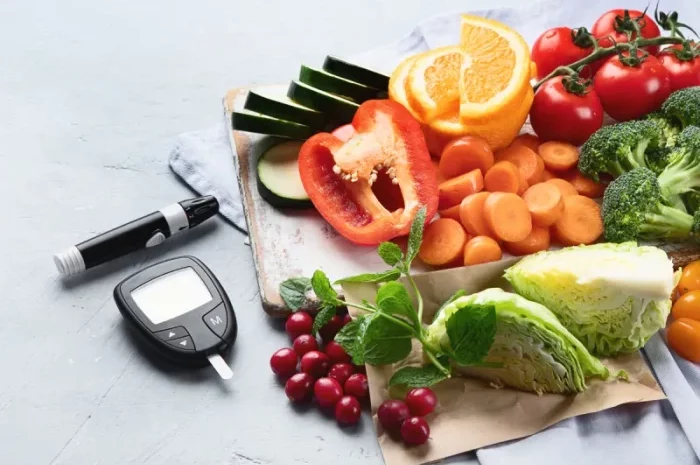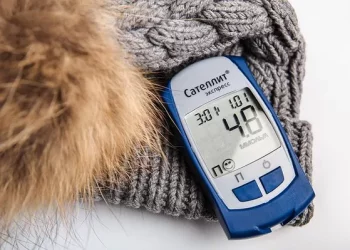Hypoglycemia, or low blood sugar, occurs when blood glucose levels fall below normal levels. It is a serious condition that can lead to a variety of symptoms, including dizziness, confusion, weakness, and, in severe cases, loss of consciousness. Managing blood sugar levels is essential for individuals who experience hypoglycemia, especially for those who are diabetic and use insulin or other medications that can lower blood sugar. One critical aspect of managing hypoglycemia is understanding how often a hypoglycemic person should eat and how meal timing plays a crucial role in blood sugar regulation.
In this article, we will explore the relationship between meal timing and hypoglycemia, providing evidence-based recommendations on how often a hypoglycemic person should eat to maintain stable blood glucose levels. By understanding the importance of nutrition, meal frequency, and balancing blood sugar throughout the day, individuals can better manage their condition and avoid dangerous episodes of hypoglycemia.
Understanding Hypoglycemia and Its Causes
Hypoglycemia occurs when blood glucose levels drop below 70 mg/dL (3.9 mmol/L). The body’s primary source of energy is glucose, and when levels fall too low, it can lead to several physical and cognitive symptoms. Some of the most common causes of hypoglycemia include:
Medications: Certain diabetes medications, particularly insulin and sulfonylureas, increase the risk of hypoglycemia by stimulating the pancreas to produce more insulin or by directly lowering blood glucose levels.
Dietary Factors: Skipping meals, consuming excessive amounts of alcohol, or eating foods that are low in carbohydrates can trigger hypoglycemic episodes.
Increased Physical Activity: Exercise increases the body’s demand for glucose, which can lower blood sugar levels, particularly in individuals with diabetes who use insulin.
Inadequate Carbohydrate Intake: Carbohydrates are the primary fuel for the body, and a lack of sufficient carbohydrates can lead to low blood sugar levels.
Other Health Conditions: Conditions such as hormonal deficiencies, liver disease, and kidney problems can also contribute to hypoglycemia.
For individuals at risk of hypoglycemia, particularly those with diabetes, preventing low blood sugar episodes is essential. One of the most effective strategies for managing hypoglycemia is meal timing—ensuring that the body receives a steady supply of glucose throughout the day.
The Importance of Meal Timing for Managing Hypoglycemia
The timing and frequency of meals can significantly impact blood sugar levels. For individuals with diabetes, particularly those using insulin or other medications that lower blood sugar, meal timing is crucial to avoid hypoglycemia. If too much insulin is taken without adequate food intake or if meals are skipped, blood sugar can drop dangerously low, leading to hypoglycemia.
Conversely, eating too infrequently or consuming meals that are high in refined carbohydrates and low in fiber can cause blood sugar to spike and then rapidly fall, increasing the risk of hypoglycemia later in the day. To maintain stable blood sugar levels, individuals at risk of hypoglycemia need to eat consistently throughout the day, focusing on a balanced approach that includes complex carbohydrates, lean proteins, and healthy fats.
How Often Should a Hypoglycemic Person Eat?
The frequency of meals for a hypoglycemic person depends on various factors, including their activity level, medication regimen, and overall health. However, a general recommendation is for individuals with hypoglycemia to eat three main meals and one or two snacks per day. This approach helps to maintain a steady release of glucose into the bloodstream and prevent fluctuations in blood sugar levels. The key is to ensure that the body is never without a source of fuel for an extended period, which could trigger a hypoglycemic episode.
1. Main Meals: Three Balanced Meals Per Day
Eating three balanced meals per day is essential for maintaining blood sugar levels. Each meal should contain a combination of complex carbohydrates, lean protein, healthy fats, and fiber to provide sustained energy and prevent rapid fluctuations in blood sugar levels.
Complex Carbohydrates: Whole grains, vegetables, legumes, and fruits are excellent sources of complex carbohydrates that provide a steady release of glucose into the bloodstream.
Lean Protein: Protein helps slow down the absorption of glucose, preventing rapid spikes or drops in blood sugar. Good sources of lean protein include poultry, fish, eggs, tofu, and low-fat dairy.
Healthy Fats: Healthy fats, such as those found in avocados, nuts, seeds, and olive oil, can help improve insulin sensitivity and stabilize blood sugar levels.
Fiber: Fiber slows the absorption of glucose, preventing rapid blood sugar spikes. Foods high in fiber include vegetables, fruits, whole grains, and legumes.
Eating three balanced meals throughout the day helps provide the body with a continuous supply of glucose, reducing the likelihood of hypoglycemia. Additionally, these meals should be spaced out evenly throughout the day to avoid long periods without food, which can lead to low blood sugar levels.
2. Snacks: One or Two Balanced Snacks Per Day
In addition to the three main meals, it is often recommended that individuals at risk of hypoglycemia consume one or two healthy snacks between meals. Snacks help maintain blood sugar levels and prevent long periods of fasting, which can lead to a drop in blood glucose. Snacks should be nutrient-dense and include a combination of carbohydrates, protein, and healthy fats.
Example of a Healthy Snack: A handful of almonds with a small piece of fruit or a serving of Greek yogurt with a sprinkle of chia seeds. These snacks provide a balance of protein, fat, and fiber, which helps regulate blood sugar levels.
When to Snack: It is especially important to snack when meals are spaced far apart or when physical activity is expected. If you’re engaging in exercise or physical labor, a snack before or after activity can help prevent a dip in blood sugar.
Snacking helps provide energy throughout the day and prevents low blood sugar from occurring, especially when there are long gaps between meals or when insulin has been administered.
3. Meal Timing and Blood Sugar Regulation
The timing of meals and snacks also plays a role in blood sugar regulation. Eating meals at regular intervals can help stabilize blood glucose levels and prevent dips in blood sugar. Here are some strategies for managing meal timing:
Eat at Regular Intervals: Try to eat meals and snacks at the same times each day. This regularity helps regulate insulin levels and ensures a steady supply of glucose.
Avoid Skipping Meals: Skipping meals can cause blood sugar levels to drop, particularly for individuals using insulin. If a meal is skipped, it can lead to an imbalance in insulin levels, causing hypoglycemia. It is important to maintain regular meal patterns.
Don’t Leave Too Much Time Between Meals: Ideally, meals should be spaced 4-5 hours apart, with snacks in between if necessary. Longer periods without food can lead to hypoglycemia, especially for individuals who take insulin or other glucose-lowering medications.
Pre-Exercise Snacks: If you plan to exercise, it’s a good idea to eat a snack that includes carbohydrates and protein about 30 minutes to an hour before working out. This will provide the energy needed for physical activity and prevent hypoglycemia during or after exercise.
4. Meal Composition and Blood Sugar Control
The composition of meals is just as important as meal timing. A balanced diet that includes the right types of carbohydrates, protein, fats, and fiber can help maintain stable blood sugar levels throughout the day. This approach reduces the likelihood of both hypoglycemia and hyperglycemia.
Carbohydrate Counting: Individuals with diabetes, especially those on insulin therapy, may need to count carbohydrates to ensure that insulin doses are appropriately matched to the amount of carbohydrates consumed. This can help prevent both high and low blood sugar levels.
Avoid Simple Sugars: While it’s essential to consume carbohydrates for energy, it’s equally important to avoid simple sugars that are rapidly absorbed into the bloodstream. Foods high in simple sugars, such as candy, soda, and processed snacks, can lead to spikes and crashes in blood sugar levels.
Include Protein and Healthy Fats: Including protein and healthy fats with meals helps slow the absorption of glucose and promotes satiety. Protein also helps preserve lean muscle mass, which is essential for maintaining metabolism and overall health.
Special Considerations for Hypoglycemia Management
Certain factors can impact how often a hypoglycemic person should eat, and these factors should be taken into consideration when planning meals.
Physical Activity: Regular physical activity can lower blood sugar levels. For individuals with diabetes or hypoglycemia, it’s important to adjust meal timing around exercise. A snack before or after exercise can help maintain stable blood sugar levels.
Medications: Medications, especially insulin, can affect blood sugar levels. Individuals who use insulin may need to adjust their meal timing and insulin doses to prevent hypoglycemia.
Stress and Illness: Stress and illness can cause fluctuations in blood sugar levels. During times of illness or stress, the body may require more frequent meals to maintain blood sugar balance.
Alcohol Consumption: Alcohol can lower blood sugar levels, especially when consumed on an empty stomach. If alcohol is consumed, it is essential to eat a meal or snack to help maintain blood sugar levels.
Conclusion
In conclusion, the frequency of meals for a hypoglycemic person is essential for managing blood glucose levels. Consuming three balanced meals and one or two snacks throughout the day can help stabilize blood sugar, prevent hypoglycemia, and reduce the risk of dangerous blood sugar fluctuations. The timing and composition of meals also play a crucial role in maintaining stable blood glucose levels, with a focus on whole, nutrient-dense foods and regular meal intervals.
For individuals with diabetes or those at risk of hypoglycemia, it is essential to work with a healthcare provider to develop a personalized meal plan that considers individual needs, medications, and lifestyle factors. By implementing the right dietary strategies and meal timing, individuals can better manage their condition, improve overall health, and prevent the complications associated with hypoglycemia.
Related topics:
What are the Best Low Glycemic Foods for Diabetics
























